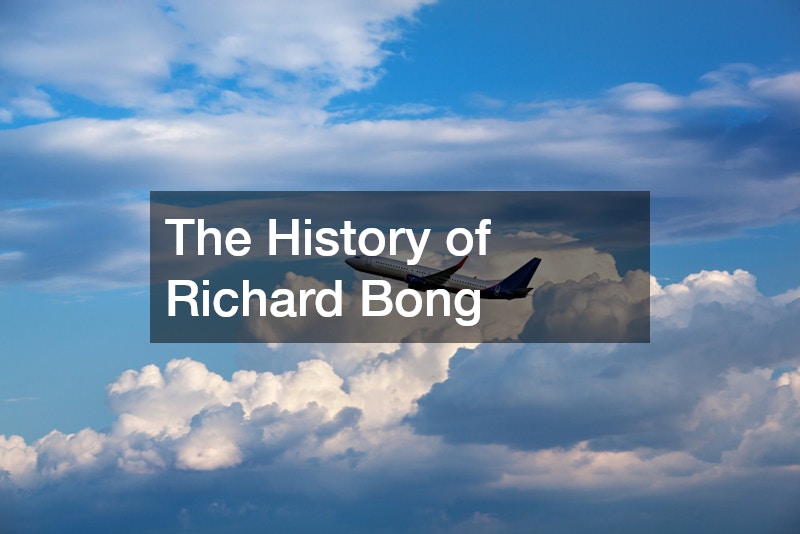When one asks, ” Who is Richard Bong?” the answer lies in the extraordinary story of a young American aviator who became the United States’ top fighter ace during World War II. Richard Ira Bong, born on September 24, 1920, in Superior, Wisconsin, distinguished himself through his remarkable aerial combat skills, earning a place in history as one of the most celebrated pilots of his time.
Early Life and Aspirations
Richard Bong grew up in a rural setting in Poplar, Wisconsin, as the eldest of nine children in a Norwegian immigrant family. His fascination with aviation began early, inspired by watching barnstorming pilots and the planes that flew over his family’s farm.
This interest in flight motivated him to join the Civilian Pilot Training Program while attending Superior State Teachers College. His natural talent and enthusiasm for flying were apparent, setting the stage for his future military career.
Military Training and Early Career
In May 1941, Bong enlisted in the Army Air Corps Aviation Cadet Program. He underwent rigorous training at various bases, including Randolph Field in Texas and Luke Field in Arizona. His exceptional flying abilities quickly stood out, and in January 1942, he earned his pilot wings and was commissioned as a second lieutenant. He was subsequently assigned to Hamilton Field in California, where he trained on the Lockheed P-38 Lightning, the aircraft that would become synonymous with his combat success.
World War II Combat Achievements
Bong’s combat career began when he was deployed to the Pacific Theater in September 1942. Flying the P-38 Lightning, a powerful and versatile fighter, Bong quickly demonstrated his prowess as a pilot. His first aerial victory came on December 27, 1942, and he continued to excel in dogfights against Japanese aircraft. Bong’s skills, combined with the P-38’s capabilities, made him a formidable opponent in the skies.
By April 1944, Bong had surpassed Eddie Rickenbacker’s World War I record of 26 kills, becoming America’s leading ace. His relentless determination and extraordinary flying skills earned him widespread recognition. He received the Medal of Honor from General Douglas MacArthur in December 1944 for his “conspicuous gallantry and intrepidity in action above and beyond the call of duty.” By the end of his combat career, Bong had achieved 40 confirmed aerial victories, cementing his status as the top American ace of World War II.
Post-War Life and Untimely Death
After achieving his 40th kill, Bong was sent back to the United States in January 1945, where he served as a test pilot for Lockheed’s new jet aircraft, the P-80 Shooting Star. This role was considered safer yet equally important in the development of post-war aviation technology. Tragically, Richard Bong’s life was cut short on August 6, 1945, when his P-80 malfunctioned during a test flight, resulting in a fatal crash.
Legacy and Honors
Richard Bong’s legacy endures as a symbol of bravery, skill, and dedication. The Richard I. Bong Veterans Historical Center in Superior, Wisconsin, stands as a tribute to his life and the sacrifices of all veterans. This center educates visitors about Bong’s achievements and the broader history of World War II aviation. Additionally, numerous memorials, schools, and streets have been named in his honor, ensuring that his contributions are remembered and celebrated.
Bong’s story is also commemorated in various books, documentaries, and exhibitions that highlight his extraordinary achievements and the impact he had on military aviation. His life and career continue to inspire new generations of aviators and military personnel, embodying the spirit of service and sacrifice.
To answer “Who is Richard Bong?” is to recognize a man whose extraordinary talents as a fighter pilot and unwavering courage during World War II earned him a place among the greatest military aviators in history. Richard Bong’s story is not just about his impressive record of aerial victories but also about his dedication, heroism, and the lasting impact he has had on American military heritage. His legacy continues to inspire, serving as a testament to the courage and commitment of those who serve in the defense of their country.
.


